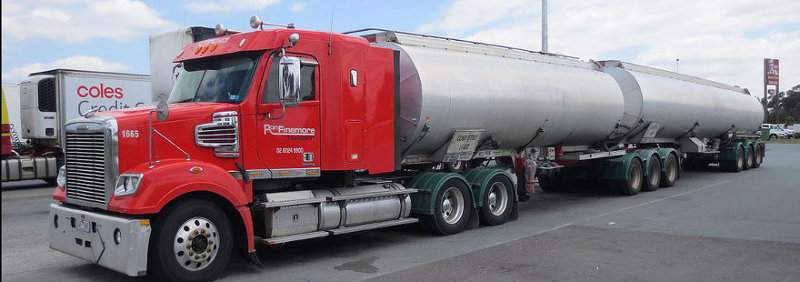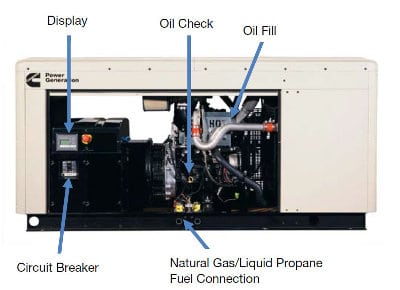Choosing the Right Generator for Your Business

A commercial standby generator can keep your lights on and your business doors open when the power goes out. A short outage might not cause much trouble, but an outage that lasts for days may tell a different story. The right standby generator installation makes all the difference to a business that offers essential services or products, especially after the power goes out following a natural disaster or major utility equipment failure.
Commercial power needs differ from residential use. Many businesses have different voltage or current requirements. Homes rarely need three-phase power, but it’s quite common in commercial applications, especially those involving motors which may include refrigeration equipment, large air conditioners, and restaurant kitchen appliances.
A business owner must choose a Commercial Standby Generator with enough capacity. The type of power required will also drive the purchase decision. In some cases, safety codes may require a backup system for life-critical equipment, but the average commercial standby model can’t provide that level of reliability. Only select generator models with the right accessories can supply these systems with power. Other standby models for non-critical systems can supply regular lighting and convenience power.
A qualified electrician can help determine the power needed and the type of system required. Armed with the right information, a call to the Norwall PowerSystems sales department determines the right model to fit your commercial standby generator needs.
Power Requirements

For a Home Backup Generator, power needs are generally quite simple. A 120/240-volt single-phase generator and automatic transfer switch system sized for the family’s daily needs will cover nearly every possible scenario. The same cannot be stated for many businesses.
Some do use 120/240-Volt service, but others need three-phase power. Norwall PowerSystems offers commercial standby generators in four power options.
- 120/240 Single-Phase
- 120/240 Three-Phase
- 120/208 Three-Phase
- 277/480 Three-Phase
Total power requirements add up all the power that the facility can expect to use at one time. A look at the utility bill can help, but it won’t include the momentary inrush of current that heavy motors require when they start. If multiple motors start at once, some generators may not handle the load.
The most reliable method of Calculating Power Requirements builds a list of appliances and lighting with individual power requirement. Those that operate at the same time add to the total power capacity required. Additional capacity allows multiple motors to start at the same time, or the business could employ a power management strategy when using standby power so that only one motor starts while the others wait until it is running at full speed.
Another strategy excludes certain areas from power use during an outage, thereby cutting the power requirements.
Fuel Options

Today, most commercial standby generators operate on either liquid propane (LP) or natural gas (NG.) Diesel fuel costs more, but not every commercial facility can rely on gaseous fuels and must turn to diesel.
An equivalent amount of diesel contains more energy than natural gas, propane, or gasoline—rarely used in standby generators. Natural gas contains the least energy of the four common fuels but remains one of the most cost-effective for standby use in homes or businesses.
Both propane and diesel require delivery and storage, natural gas distribution through municipal and utility pipelines connects a virtually unlimited supply directly to the customer. Propane storage is both simpler and less environmentally dangerous than diesel. A large diesel spill requires cleanup and decontamination, usually a costly process. However, with the right equipment and safety features, diesel provides a reliable and safe alternative to natural gas and propane.
Storing enough diesel for use during outages that last days presents a problem and daily deliveries may be required.
Some commercial generators operate on either natural gas or LP gas through a conversion procedure. Others require one fuel or the other. Diesel generators only operate on diesel.
LP Commercial Standby Generators
Liquid Cooled vs Air Cooled
 Air-cooled generators cool themselves by blowing air through the generator cabinet and over the engine and other components. Liquid-cooled commercial generators operate much like an automobile engine. A radiator and reservoir supply a liquid coolant which the engine pumps through the engine to absorb heat, and then releases the heat through the radiator which is in turn cooled by a fan.
Air-cooled generators cool themselves by blowing air through the generator cabinet and over the engine and other components. Liquid-cooled commercial generators operate much like an automobile engine. A radiator and reservoir supply a liquid coolant which the engine pumps through the engine to absorb heat, and then releases the heat through the radiator which is in turn cooled by a fan.
The ability to cool themselves limits the size of air-cooled generators to 22 kilowatts or less. In addition, hot climates where temperatures rise over 100-degrees Fahrenheit affect cooling and may cause frequent shutdowns due to overheating.
Air-Cooled Commercial Standby Generators are limited to small businesses with limited power requirements in either three-phase 120/240-volt or single-phase 120/240-volt power options.
Air Cooled Generator vs Liquid Cooled | What's the Difference?
Liquid-cooled generators don’t suffer the same limitations. They cool themselves in hot weather and won’t overheat when correctly installed. The largest units up to 3 megawatts can supply the equivalent of a small town of 200 homes. Add in the ability to operate in parallel with other generators, and the commercial standby generator possibilities extend to large businesses, manufacturing or industrial operations, and large-scale agricultural uses.
Norwall PowerSystems offers commercial standby generators up to 150 kilowatts for small to medium-sized businesses.
Power Expert Sizing Guides - Calculator - Articles
Updated December 3, 2018
